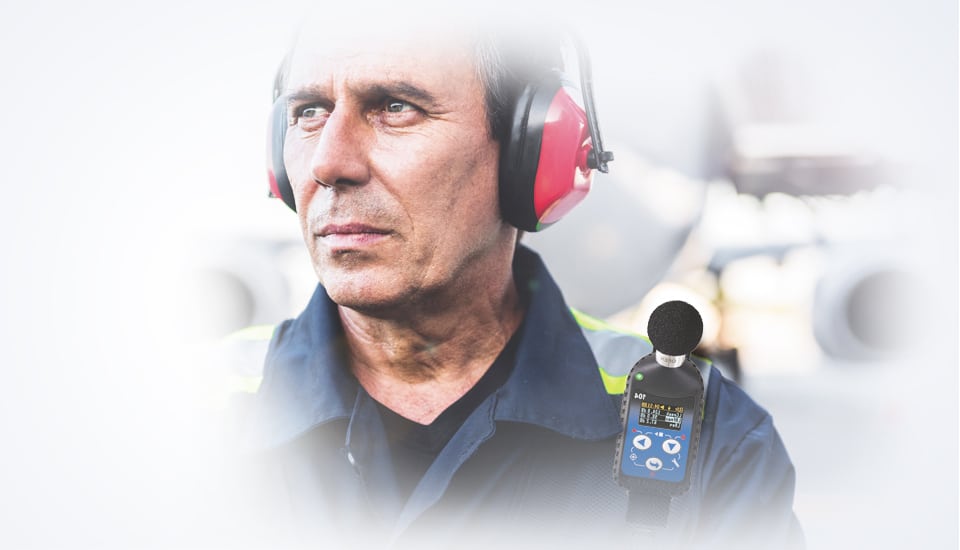Occupational noise exposure in the UK refers to continuous or high-intensity workplace sound levels that threaten the auditory health of employees. It is a major concern because sustained noise above safe thresholds can lead to permanent hearing loss, hinder communication, and increase the risk of accidents.
The UK’s legal framework, primarily the Control of Noise at Work Regulations 2005, places a duty on employers to assess noise risks and implement measures to protect workers. Employers must conduct risk assessments when noise reaches 80 dB(A), and they are required to provide hearing protection at 85 dB(A). By mandating systematic noise control, these regulations help safeguard workers’ long-term well-being and maintain safer working conditions.

Occupational noise exposure occurs when employees spend extended periods in environments where sound levels exceed recommended limits. It matters because prolonged exposure damages sensitive hair cells in the inner ear, leading to noise-induced hearing loss (NIHL) and often tinnitus, both of which are irreversible conditions. Risk accumulation escalates as daily decibel levels rise. Over time, even moderately high noise can culminate in significant auditory damage. This is why continuous monitoring, employee training, and strict adherence to exposure thresholds are essential. Employers who neglect to manage noise hazards put their workforce at risk of lifelong hearing impairment and potential legal repercussions.
Hazardous noise typically originates from machinery, power tools, and industrial processes. It is especially prevalent in sectors like construction, manufacturing, and transportation, where equipment such as metal presses or aircraft engines can surpass safe decibel levels.
High-decibel machines generate excessive noise that jeopardizes hearing health if unaddressed. Beyond industrial sites, noise in entertainment venues, nightclubs, and sports arenas often exceeds 100 dB(A), creating additional risks for staff. Identifying and isolating these noise sources is the first step toward effective management and compliance with UK regulations.

Workplace noise is a major occupational hazard that can lead to noise-induced hearing loss (NIHL), a permanent and irreversible condition caused by prolonged exposure to high noise levels. In the UK, industries such as manufacturing, construction, transportation, and entertainment frequently expose workers to noise exceeding 85 dB(A), the threshold at which hearing protection is legally required under the Control of Noise at Work Regulations 2005. Continuous exposure to loud environments damages the delicate hair cells in the inner ear, reducing the ability to detect sound frequencies and leading to difficulty understanding speech, increased sensitivity to noise, and, in severe cases, total hearing loss.
The effects of workplace noise extend beyond hearing impairment. Persistent exposure to excessive noise has been linked to tinnitus (ringing in the ears), stress, cardiovascular disease, and decreased cognitive function. Furthermore, high noise levels can disrupt communication and concentration, increasing the likelihood of workplace accidents and injuries. Since NIHL is entirely preventable, UK law requires employers to implement noise control measures, such as engineering controls (soundproofing, machine enclosures), administrative actions (rotating workers, limiting exposure time), and personal protective equipment (earplugs, earmuffs) when necessary. By taking proactive steps to reduce noise exposure, businesses can safeguard worker health, improve productivity, and comply with legal obligations, ensuring a safer and more sustainable work environment
Eighty-five decibels (85 dBA) is crucial because sustained exposure above this threshold significantly elevates the risk of irreversible hearing damage. Research shows that, once the inner ear’s sensory cells are compromised, they do not regenerate, causing permanent auditory deficits.
Employers provide hearing protection and control measures at or above 85 dB(A) by UK law. This action level also mandates the designation of hearing protection zones, underscoring the urgency of preventing further damage. Exceeding this noise benchmark can impede workplace communication and lead to costly penalties for regulatory non-compliance.

Hearing conservation programs in the UK outline systematic approaches to identifying and mitigating high noise levels, aiming to preserve employees’ auditory health. These programs matter because they align with the Control of Noise at Work Regulations 2005, which require employers to reduce exposure, provide hearing protection, and monitor at-risk workers.
Audiometric testing detects early signs of hearing loss, allowing employers to act before the damage becomes severe. By combining regular noise surveys, effective training, and the proper use of protective equipment, such programs fulfill legal obligations and protect worker well-being. The Health and Safety Executive (HSE) enforces these measures, issuing penalties for non-compliance.
The UK regulations set three critical noise levels:
Employers must act if noise meets or exceeds these levels, ranging from risk assessments (at lower values) to implementing mandatory hearing protection zones (at upper values).

The upper noise exposure action level is 85 dB(A) for daily or weekly average exposure. Once noise reaches or surpasses this limit, employers must introduce comprehensive noise control measures, provide appropriate hearing protection, and closely monitor noise levels to safeguard workers’ hearing.
Prevention focuses on eliminating or minimizing noise at its source. Employers can opt for quieter machinery, enclose noisy equipment, or rotate workers to reduce individual exposure time. If these controls are insufficient, personal protective equipment (PPE)—such as earmuffs or earplugs—must be provided. Ensuring employees receive proper training further reinforces safe practices and promotes awareness of noise hazards.
The hierarchy of controls is a structured approach to managing workplace hazards, including occupational noise exposure, by prioritizing the most effective methods for risk reduction. This framework consists of five levels:
By following this sequence, employers can systematically reduce noise risks. It is important that PPE (such as earplugs and earmuffs) is used when other measures are insufficient. The hierarchy of controls ensures that noise risks are managed systematically, prioritizing long-term solutions over temporary fixes and aligning with UK noise regulations to safeguard worker health.

Occupational noise exposure testing measures the sound levels to which workers are exposed, ensuring compliance with the Control of Noise at Work Regulations 2005. Tests are performed with sound level meters for spot-check assessments or noise dosimeters for full-shift monitoring. The data collected guide employers in deciding whether to apply engineering controls, administrative actions, or PPE to mitigate risks.
Occupational noise exposure testing ensures compliance with UK health and safety regulations, helps prevent hearing damage, and reduces workplace risks such as accidents caused by impaired communication. Employers who fail to conduct proper noise assessments risk legal penalties, including fines and enforcement action by the Health and Safety Executive (HSE).

Two primary devices evaluate workplace noise risks in the UK:
These devices typically measure sound in decibels and apply an A-weighting filter (dBA) to reflect the human ear’s sensitivity to different frequencies. Advanced noise measurement tools may also include octave band analyzers, which help identify specific frequencies contributing to excessive noise, allowing for targeted noise reduction strategies. Proper calibration and regular use of occupational noise measurement equipment are essential for accurate risk assessments, ensuring that workplace noise remains within legal limits and that workers’ hearing health is adequately protected